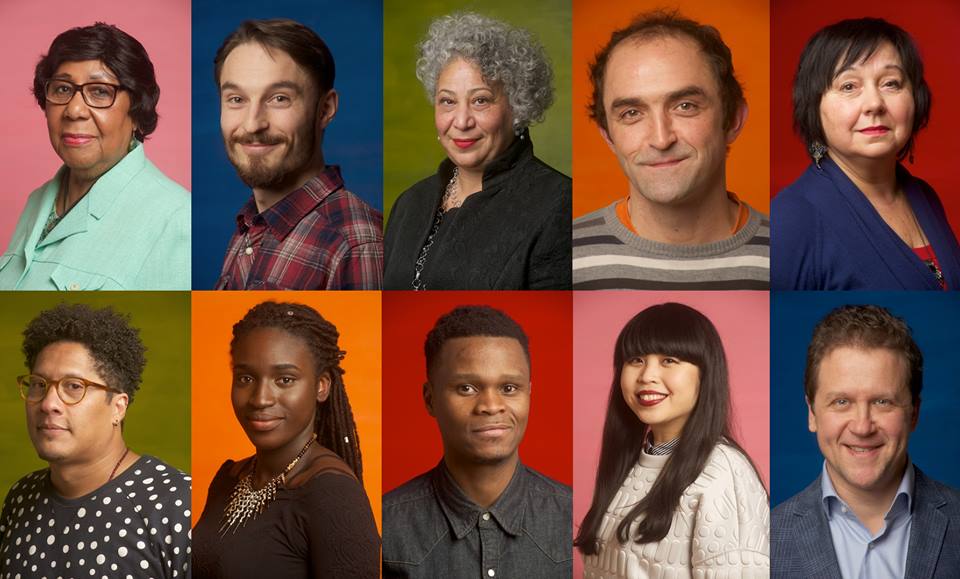
Melyoon 2015
July 28, 2015
PlayandPeace
June 11, 2016With over 180 nationalities, Amsterdam is scoring high marks on diversity. Is that something to be proud of? Russell Shorto, historian, former Amsterdammer and author of two highly acclaimed books about Amsterdam discusses the benefits of openness to a city like Amsterdam.
Melting pot: Why openness pays off I never stopped to take note of the range of nationalities I was in regular contact with during the six years I lived in Amsterdam, but writing a column about diversity in the city offers a good excuse to reflect on the subject. French, Irish, Iranian, Moroccan, American, Canadian, South African, Australian, Israeli, Afghani and Belgian – that would be a quick accounting. Oh, and Dutch.
Of course, anyone living in any city might easily conjure a similarly varied list. That’s the nature of the world we live in. One thing that sets Amsterdam’s diversity apart is its antiquity. Maybe it’s stretching things to say that Amsterdam invented diversity, but it is certainly the case that Amsterdam’s growth – its rise to Golden Age greatness – had precisely to do with its diversity. And it’s not a stretch to say this: in becoming the melting pot of Europe in the 1500s and 1600s, the city set the template for modern urban life.
‘Diversity’, of course, is a modern buzzword. To me it is corporate-speak. It signals that the speaker is about to go down the dull road of attempting to appease some perceived community of the aggrieved. The word has the hollow thud of insincerity in it. The reality behind it, however, is the opposite of dull and insincere. The real world, the world of glass-and-metal skyscrapers and thronged sidewalks, is a place where ethnicities and languages and cuisines are stewing together and emitting new products and ways of being with digital light-speed. The real world is far ahead of ‘diversity.’
Amsterdam’s Golden Age of diversity
Amsterdam, with its unique role in European history, set the foundation for our real world. Amsterdam circa 1584 was the goal for refugees. Spain had attacked the provinces of what is now Belgium; the city of Antwerp – which was the New York of the day, the hub of finance and cross-cultural business – fell to the armies of the Inquisition. People panicked. Bankers and textile manufacturers, cartographers and spice dealers, Jews and Christians: they fled – northward. Amsterdam had been rising too, over the previous century, not on the refined trade that Antwerp specialised in, things like silk and cinnamon, but on bulky, earthy products: timber, salt, herring. In a humbler, rougher way, it too was growing. Many of the Antwerpers had links to it, so it became their destination.
“in becoming the melting pot of Europe in the 1500s and 1600s, the city set the template for modern urban life”
That mass migration proved to be the first step to Amsterdam’s discovery of the secret of (dare I say it) diversity. You have to remember that throughout Europe (indeed, around the world) for most of history intolerance was official policy. It was universally held that in order for a society to be strong and stable, its people had to be unified. A mix of languages and faiths spelled disorder, which meant, in time, chaos, and eventual takeover. Nations worshipped the gospel of purity.
‘Diversity’ vs ‘openness’
In the midst of an intolerant world, Amsterdam, as it took in hordes from all over Europe and as far away as Africa and the Middle East, discovered that there was gold to be mined in the reverse concept. Tolerance of differences – not just on the part of the government but in the eyes of ordinary citizens, neighbours, people on the street – meant connections to far-flung lands, business deals, access to new ideas. And the new ideas often meant new business, even new industries. And, in time, the reputation for tolerance had a multiplying effect. Amsterdam’s printers – rough tradesmen with their ink-stained hands – capitalised on the city’s reputation as an entrepot for new ideas by announcing their availability to print texts on a wide variety of topics, virtually free of censorship.
“Tolerance of differences – not just on the part of the government but in the eyes of ordinary citizens, neighbours,
people on the street – meant connections to far-flung lands, business deals, access to new ideas”
Soon the city became the world capital of publishing. Political and scientific tracts – both of which were banned in many other places for impugning ruling regimes and/or the Church – churned from the city’s presses. Galileo and Descartes had their works published by Dutch printers. And those works contained not only new ideas, but the seeds of new industries. You’re an enterprising businessman and you read about the wondrous possibilities of the telescope, or the microscope. What do you do? You open a factory that produces lenses, eyepieces, metal tubes, focusing knobs. The city’s surgeons hold public anatomy lessons by dissecting the corpses of executed murderers; there is a flurry of interest in the subject. The presses get to work producing exquisite full-color texts showing the intricacies of the human body. A skipper from Norway or Iceland pulls into the IJ, Amsterdam’s harbor, in a vessel sporting an innovative hull design. The city’s shipyards get to work.
That is how Amsterdam became the centerpiece of the Golden Age, and, in time, the model that other cities strove to copy. ‘Diversity’ – in the sense of a target number of different nationalities – is not necessarily the point. Openness is the point. We know this today – at least, some of us do. We know that innovations in wind power, water management, elevator design, driverless cars, biodegradable packaging or sustainable farming come from dropping defenses, from being a truly open society.
From the past to the future
With 180 nationalities, Amsterdam today reflects its past. You see the most obvious modern-day form of the city’s storied openness in places like the Dappermarkt, in Amsterdam East, which is sometimes called the best open-air market in the Netherlands. There is a babble of languages. Buyers, sellers and products come from Suriname, Indonesia, China, Thailand, Poland.
Of course, such balkanization (if I can use the term) may signal the opposite: a tendency on the part of ethnic communities to remain apart, a tendency not to mix and share ideas. And in Europe lately the fear of the other – the fear of terrorism, or of newcomers taking jobs, or the fear of the local culture drowning in a sea of foreignness – has been strong. Nativism is on the rise. There are reasons for concern.
And yet, the engine of history is not going to move into reverse. The genie is out of the bottle; the world of our children will be unimaginably different from the one we grew up in. It could be darker and more frightening. Or it could be brighter, more filled with possibilities, more open and also more secure. To get there requires bravery. Amsterdam today – the city I know and have lived in and written about – knows its history, knows what has worked so well. Even such a thing as the Zwarte Piet debate is enormously healthy. It reflects a more fully engaged mixing of cultures and backgrounds. Old stereotypes are being seen as just that: old and stereotypes. New traditions can be invented. Amsterdam’s past is its future.
Comité van Aanbeveling:
- Eberhard van der Laan (burgemeester Amsterdam)
- Sylvana Simons (presentator, host, spreker)
- Martin Berendse (directeur OBA)
- Paul Luijten (directeur Corporate Affairs Schiphol)
- Tracy Metz (journalist)
meer informatie: www.180amsterdammers.nl
Text Russell Shorto
180amsterdammers is powered by: Bridgizz and YOUnite together with:
AmsterdamF, Amsterdam Marketing, OBA, Amsterdam Museum, HetParool, GemeenteAmsterdam (Diversity depart.), EU2016, NieuwWij, StorySupply and many more…




